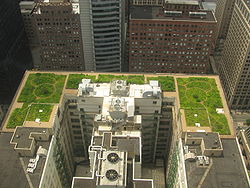40 % of GHG emissions are from the built environment heating & cooling infrastructure. After all us humans need to be cosy in our cubes.IF building are the elephant in the room then why don't politicians take action on reviewing SEPP's , provide incentives & grants, mandate biosolar for new developments, provide greater FSR's for green roofs....etc and even review the BCA which is well due.
Australasia News
What Is Green Infrastructure?
 Green infrastructure, also sometimes referred to as GI, is an innovative approach to managing stormwater runoff. It utilizes natural processes, such as evapotranspiration and infiltration, to slow down stormwater to from overwhelming SW systems and polluting waterways.
Green infrastructure, also sometimes referred to as GI, is an innovative approach to managing stormwater runoff. It utilizes natural processes, such as evapotranspiration and infiltration, to slow down stormwater to from overwhelming SW systems and polluting waterways.
When the 202020 Vision started in 2013, it set out to achieve 20 per cent canopy cover in Australia’s urban areas by 2020. It may not be achieved by next year but the aspiration has generated a vast amount of activity.
Plans are afoot to redesign an entire block in central Melbourne based on biophilic principles, creating an exciting new landmark in the city.
Canberra's relative abundance of green vegetation provides a natural canopy to reduce heat stress not only for humans but for our rich biodiversity. Investing in and maintaining our "living infrastructure" is critical to a healthy and liveable future.
Two Griffith University researchers have been awarded a grant for research that will help cities predict and quantifying the benefit of similar green infrastructure for capturing atmospheric carbon.
There is a fresh call for groundbreaking temperature reduction targets to be set across western Sydney to tackle rising urban heat and turn stifling concrete jungles into green, liveable cities.
Leaving trees in the ground and planting new ones could help future proof new development sites against extreme heat










